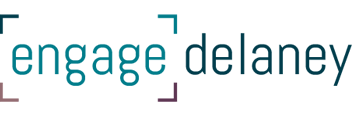The Role of Engagement in Decision-Making
At Delaney, we follow the International Association of Public Participation (IAP2) practice framework and engagement best practices in each of our projects. This means that, before we get to the fun part of choosing our engagement techniques (World Café, Open Space, Participatory design, survey, pop-ups, or over a hundred others), and even before we establish our engagement objectives (statements that outline the outcomes and outputs our process aims to achieve), we need to clearly outline the decision the engagement process is seeking to support. We do this by drafting a decision statement or statement of intent and sometimes called a scoping statement.
The decision statement is a helpful tool to understand why we are conducting engagement. It is also a vital reminder that engagement is not the only aspect of an overarching initiative, but rather one piece of the puzzle that can inform better decision-making.
In a complicated world, we all look for ways to make better decisions, that are community-minded and move projects or initiatives forward. Often, as engagement consultants, we are brought on with clients when they have reached a nexus point and want to undertake an engagement process to:
- Better understand the needs of the community they serve
- Build trust in their organization
- Manage risk by including the community in the decision-making process
- Harness innovation to support more durable decisions, and/or
- Advance a more equitable and just community.
These are all valuable aims when pursuing engagement. However, engagement is not a “fix-all” approach. As much as we wish there were an “easy button” that made good decision-making easy, it is important to recognize that engagement alone, is not typically ‘the answer’. Unless it’s a referendum, an empowered citizen jury or other empower-level engagement method, it’s important to recognize that engagement doesn’t usually “give” the answer but facilitates deeper thinking and decision-making on what the answers “could be.”
Delaney is well-versed in qualitative and quantitative analysis, and in writing fulsome and informative reports on engagement processes. Often these reports are referred to as “what we learned” reports, which is an appropriate descriptor. We don’t call our reports “what you should do next” or “the answer to all your questions” reports, because that is not the role they serve.
We understand that it can be frustrating to receive results that are not conclusive or even conflicting (for example, “many participants thought giraffes should be domesticated pets, while others believed they should be left in the wild”). This is a common reality when engaging with a community of individuals, and our reports are reflections of those varying perspectives. It’s also important to consider that often those who engage in processes are those who are particularly activated – whether from a positive perspective or a negative perspective. Though we always design our processes to be inclusive and accessible, often, a “complacent middle” perspective is under-represented. If you’re just satisfied with how things are, why participate? It is important to consider this, and the varying perspectives you hear in engagement, along with many other sources of information, such as government guidelines and mandates, industry best practices, environmental impacts, and technical abilities and restrictions, amongst others.
Engagement is a valuable tool to provide a window of insight into the perceptions, beliefs, experiences, and preferences of your target audience. As engagement practitioners, we ensure that your engagement processes are inclusive, accessible, far-reaching, and captivating so we can reach as diverse a group as possible. While decisions will continue to be delightfully complex, engagement can help you to begin to wade through that complexity and help you on your way to durable decisions and solutions.




